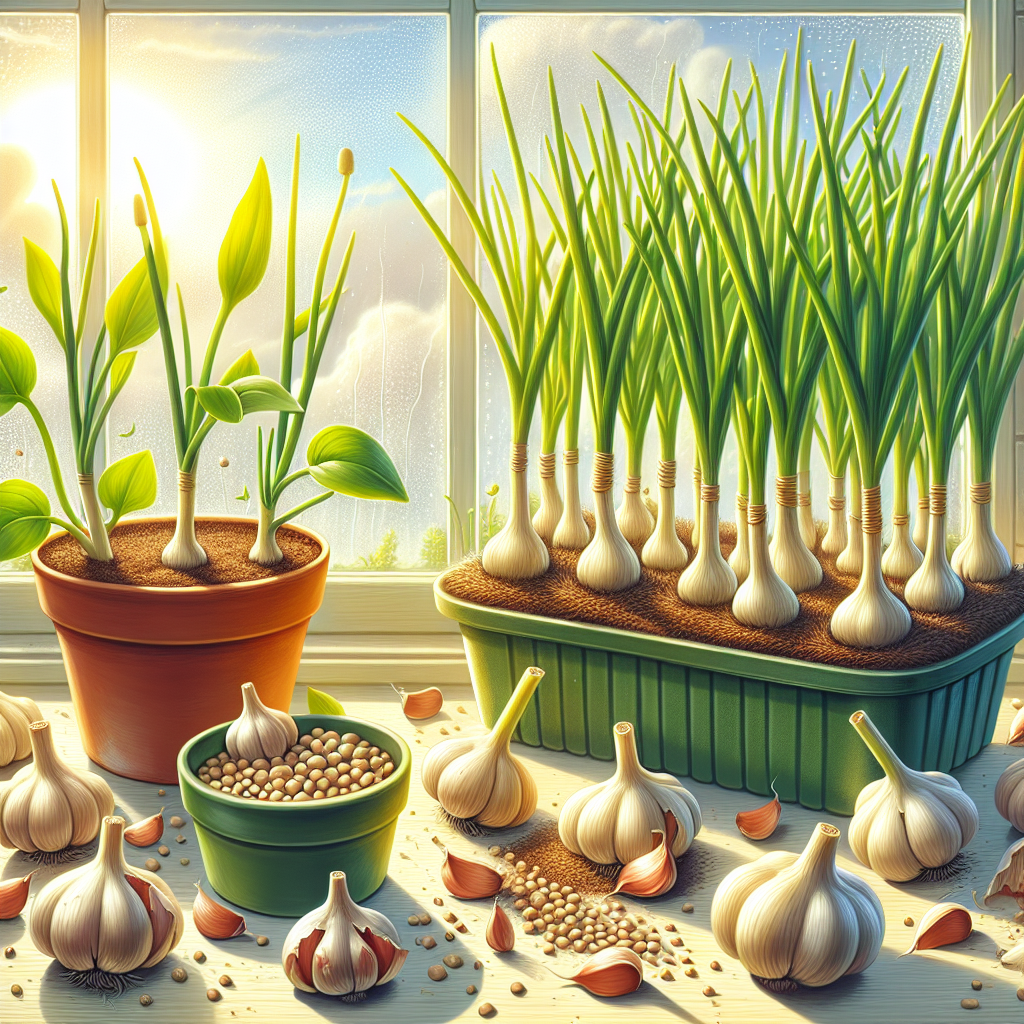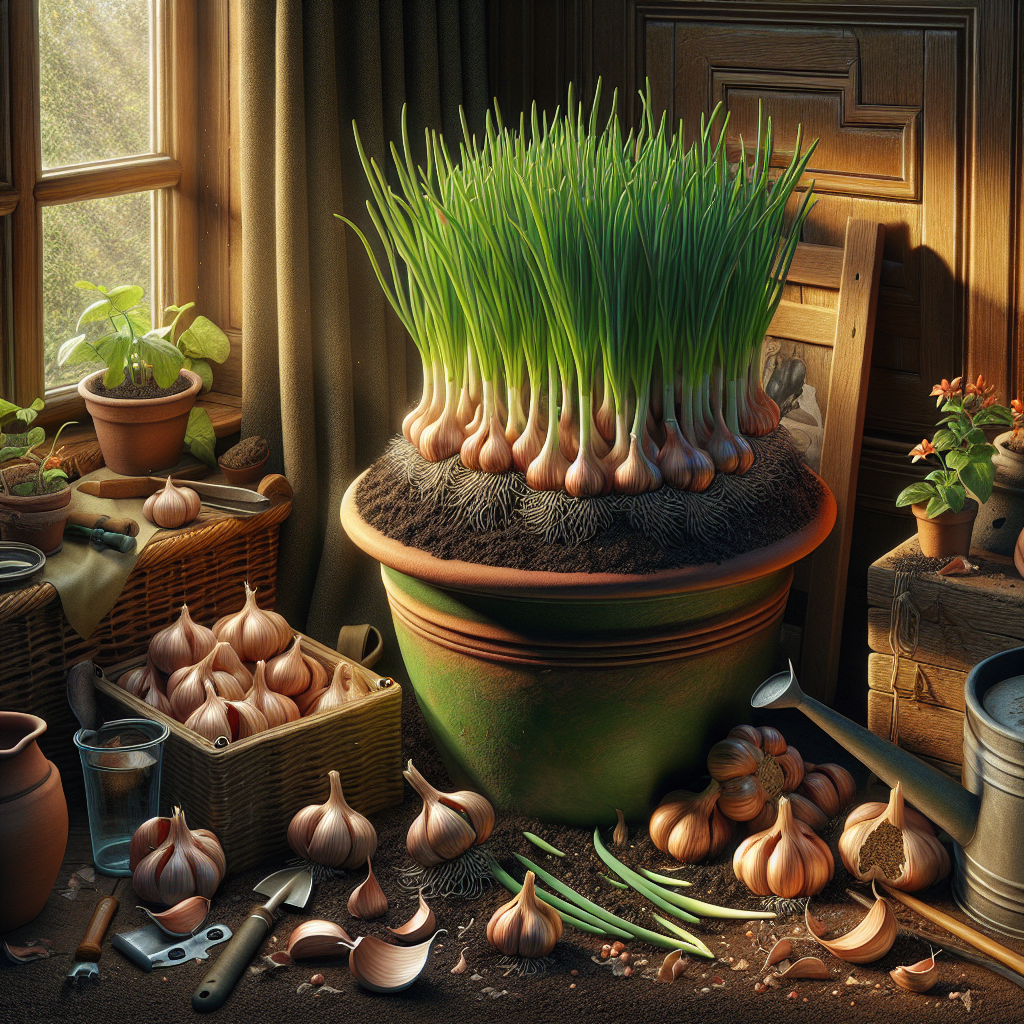Mastering the Art of Growing Garlic in Your Home
Garlic, with its pungent aroma and unique flavors, has been a staple ingredient in cuisines around the world for centuries. Known for its numerous health benefits and culinary value, growing your own garlic at home gives you the opportunity to enjoy it fresh and organic. Whether you have limited space or are a gardening enthusiast, mastering the art of growing garlic in your home is a rewarding experience that will yield flavorful results. In this article, we will guide you through the necessary steps to successfully grow garlic in your own backyard.
Choosing the Right Garlic Variety
To begin your garlic-growing journey, it is essential to select the right variety suitable for your region. There are two main types of garlic: softneck and hardneck varieties. Softneck garlics are more common and known for their longer shelf life. They produce multiple layers of cloves and tend to do well in warmer climates. On the other hand, hardneck varieties have a stalk (scape) that grows from the center, and they thrive in colder climates.
Preparing the Soil
Garlic grows best in loose, well-draining soil enriched with organic matter. Before planting, it is advisable to loosen up the soil using a garden fork or tiller. Remove any weeds or rocks that could interfere with bulb development. Adding compost or well-rotted manure can improve soil fertility and provide essential nutrients for healthy plant growth.
Planting Garlic Cloves
When selecting cloves for planting, it is crucial to choose healthy bulbs without any visible signs of disease or damage. Break apart each bulb into individual cloves while leaving their protective paper intact. Plant each clove with its pointed end facing upward around 2 inches deep into the soil. Space them about 4-6 inches apart, allowing enough room for growth.
Caring for Garlic Plants
Once planted, garlic requires regular watering to establish strong roots and promote bulb development. Aim for consistent moisture levels in the soil, avoiding overwatering that can lead to fungal diseases. During dry periods, provide about an inch of water per week, either through rainfall or manual watering.
Weeding is essential to maintain a clean growing environment and prevent competition for nutrients. Mulching with straw or other organic materials can help suppress weeds and retain soil moisture.

Garlic plants also benefit from regular fertilization. Apply a balanced organic fertilizer during the growing season, following the manufacturer’s instructions for application rates. This will ensure adequate nutrient availability for healthy leaf growth and bulb formation.
Managing Garlic Scapes
As the garlic plants grow, they will produce scapes – curly flower stalks emerging from the center. It is advisable to remove these scapes to encourage bulb development. When the scapes curl once or twice, use clean garden shears to cut them close to the base of the plant. The harvested scapes are delicious and can be used in various dishes such as stir-fries, pesto, or roasted as a flavorful side dish.
Harvesting Garlic
Garlic bulbs are typically ready for harvesting when their foliage starts turning yellow or brown and begins dying back (usually around mid-summer). Before harvesting, stop watering about two weeks in advance to allow bulbs to dry out slightly.
Gently loosen the soil around each bulb with a garden fork or trowel, being cautious not to pierce or damage them. Carefully lift each plant out of the ground and shake off any excess soil. Avoid washing the bulbs as this could promote spoilage during storage.
Curing Garlic
After harvesting, garlic needs to be cured before long-term storage. To cure garlic, place harvested bulbs in a well-ventilated area with low humidity such as a garage or covered porch. Avoid direct sunlight exposure that may cause excessive drying.
Arrange garlic bulbs in single layers or hang them in bundles using twine. Allow them to cure for two to three weeks until the outer skins have dried and become papery. Once cured, remove any dirt or loose outer skin layers, trim the roots, and store your garlic in a cool, dry place.
Conclusion
Growing garlic in your home can be a rewarding endeavor that provides you with fresh, flavorsome bulbs all year round. By choosing the appropriate garlic variety, preparing the soil adequately, and providing proper care throughout the growth cycle, you can master the art of growing garlic in your own backyard. From planting to harvesting and curing, each step contributes to the overall success of your garlic crop. So roll up your sleeves and get ready to experience the joy of cultivating this versatile culinary treasure right at home.













